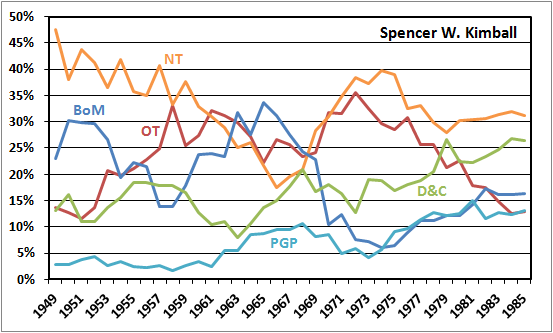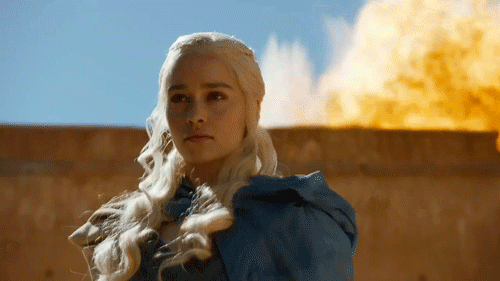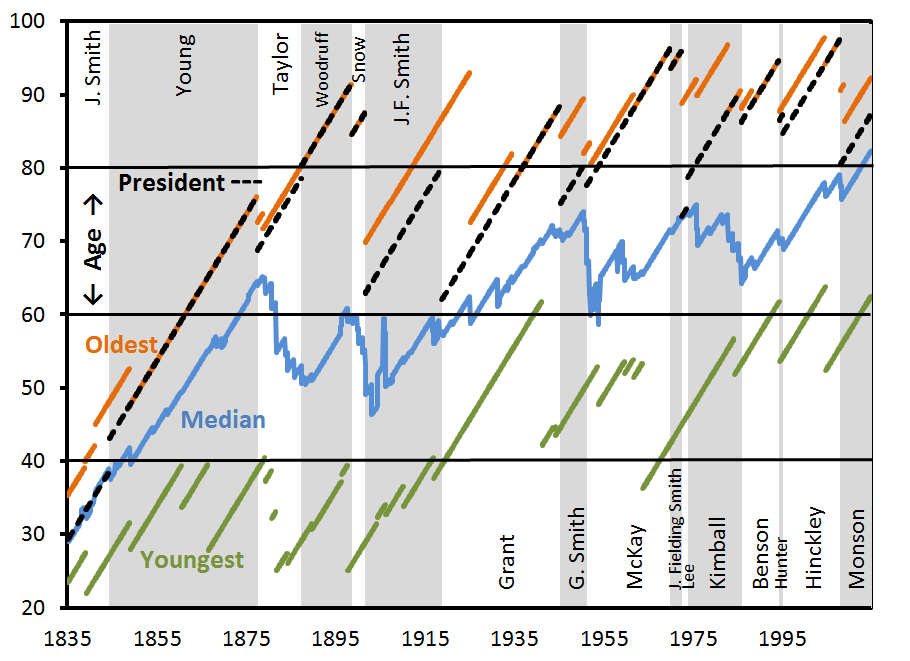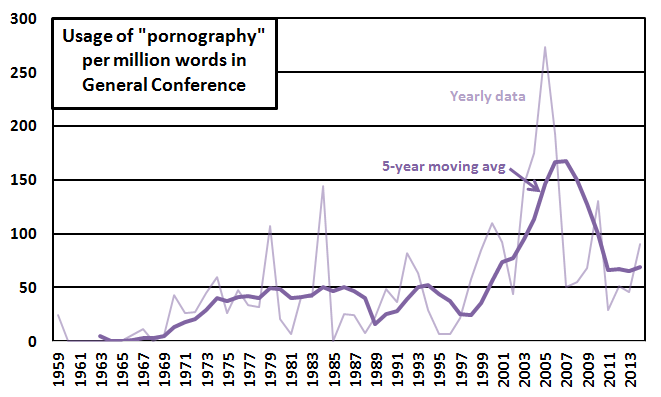This post is a follow-up to my post last week, where I looked at how much members of the First Presidency and Quorum of the Twelve (Q15) quote from each of the five books of scripture in the LDS canon in their Conference talks. In the previous post, I showed one breakdown for each Q15 member, aggregating his citations of scripture in all his Conference talks, across whatever period of years he served in the Q15. In this post, I’ll show trends across time for each individual Q15 member. The previous analysis would miss it if a GA changed over time from preferring the Book of Mormon to preferring the New Testament, for example. This analysis might be able to show such changes (if they’re large enough). As for the previous post, my data source is the LDS Scripture Citation Index.
The graphs below show seven-year moving averages for the percentages of citations each Q15 member took from each book of scripture. There’s nothing special about seven years for the moving average. I chose it by eyeball. The year-to-year data often jump around a lot, which isn’t surprising given that for Q15 members who aren’t in the First Presidency, one year’s worth of Conference talks is typically just two talks. Seven years of aggregation looked like a good compromise that smoothed out the yearly variation but didn’t smooth so much that it made changes over time disappear. One other note is that I’ve only made graphs for members who have at least 16 years of data. This allows for 10 years worth of seven-year moving averages to be shown (because the first six years are combined into the initial seven-year moving average).
Graphs for Q15 members are shown in the order they were called, which is the same ordering I used in my previous post. Also, to make it easier to look back and forth between the two posts, I’ve used the same color to represent data for each book of scripture as in the previous post. One warning with these graphs is that the scaling of both the horizontal and vertical axes changes from person to person to best display each Q15 member’s data, so be careful if you’re looking at comparisons across graphs.




 When I was 16 years old, my Utah ward put on a road show. I don’t remember much about the plot, but I do remember that it had a comedy dream sequence that included some dancing circus ballerinas. For some reason none of the young women wanted to be the ballerinas, so my buddy Rich and I volunteered. My mom and other ladies in the ward sewed us full-body ballerina suits, complete with tutus and ballet slippers. As cross-dressing ballerinas, we were the stars of the show.
When I was 16 years old, my Utah ward put on a road show. I don’t remember much about the plot, but I do remember that it had a comedy dream sequence that included some dancing circus ballerinas. For some reason none of the young women wanted to be the ballerinas, so my buddy Rich and I volunteered. My mom and other ladies in the ward sewed us full-body ballerina suits, complete with tutus and ballet slippers. As cross-dressing ballerinas, we were the stars of the show.
